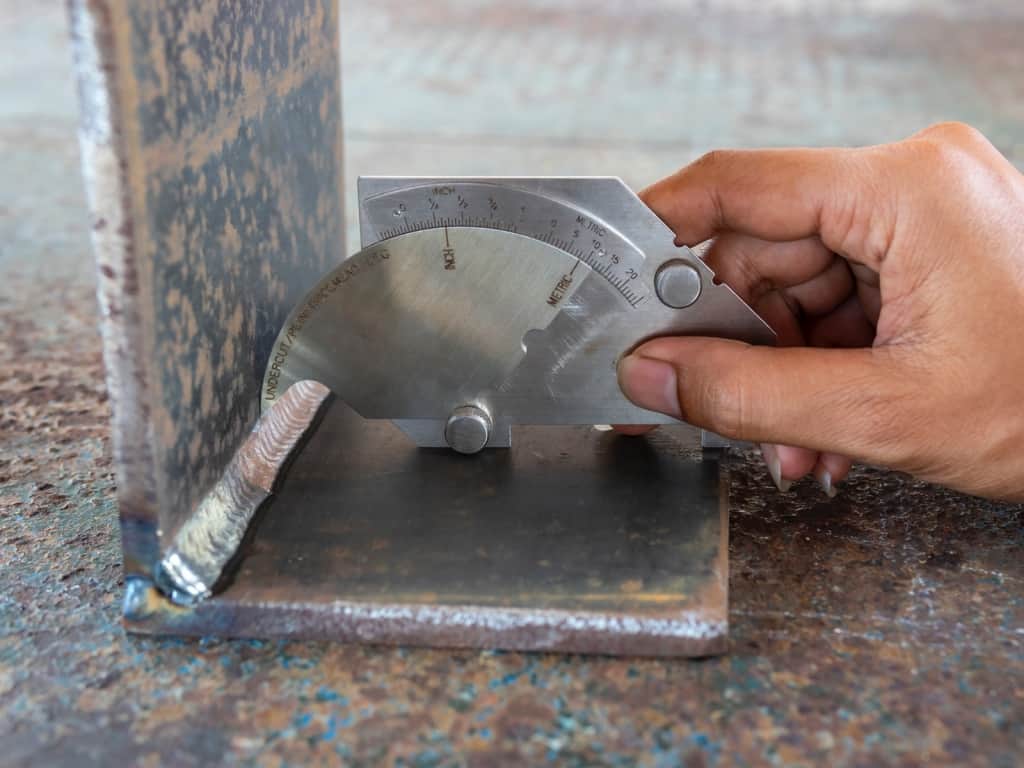Understanding the Causes and Solutions for Undercut Welding in Steel Manufacture Procedures
In the realm of steel fabrication procedures, the incident of undercut welding postures a considerable difficulty that requires a detailed understanding of its causes and sensible options. The intricate interplay of different elements during welding operations can result in this undesirable sensation, impacting the architectural stability and total high quality of the welded joints - Preventing weld undercut. By exploring the source of undercut welding and checking out efficient therapeutic actions, fabricators can raise the requirement of their handiwork and guarantee the manufacturing of flawless steel components
Typical Sources Of Undercut Welding
Frequently overlooked in metal fabrication, undercut welding takes place because of various factors that demand thorough attention and competence to be efficiently minimized. One usual reason of undercut welding is extreme warmth input. When the warm input is as well high, it can cause the melting and subsequent disintegration of the base product along the sides of the weld joint, creating a groove or undercut. Furthermore, inappropriate welding strategies, such as using the wrong welding angle or travel rate, can also add to damage development. Inadequate shielding gas coverage is an additional essential element that can cause damaging. Inadequate gas coverage falls short to safeguard the weld swimming pool adequately, causing oxidation and undercut issues. Furthermore, the option of welding criteria, such as voltage, present, and wire feed speed, plays a considerable role in the incident of undercut welding. Understanding these common causes is crucial for executing safety nets and making sure high-grade welds in metal fabrication processes.
Impact of Incorrect Welding Parameters
Incorrect welding criteria can dramatically compromise the integrity and top quality of welded joints in steel fabrication processes. The influence of inaccurate welding parameters manifests in numerous ways, leading to structural weaknesses and defects in the welded elements. Thorough focus to welding parameters is vital to ensure the production of top notch welds with the preferred mechanical residential properties and architectural integrity.
Impact of Improper Torch Angle
Improper torch angle in welding procedures can dramatically impact the quality and honesty of the final weld joints in steel fabrication procedures. The torch angle plays a vital role in determining the warm input and distribution during welding. When the torch angle is wrong, issues such as undercutting can arise. Undercutting is a common welding issue where a groove forms along the weld toe, weakening the joint and compromising its structural stability.
A torch angle that is as well steep can lead to not enough penetration, insufficient combination, and boosted spatter. On the other hand, a torch angle that is too superficial can cause too much infiltration, burn-through, and distortion of the base material. Preventing weld undercut. Correct lantern angle is necessary for making certain regular weld top quality, stamina, and look
To protect against undercutting and various other flaws caused by inappropriate lantern angles, welders should be educated to preserve the proper torch angle throughout the welding process. Regular monitoring and adjustment of torch angles during welding can aid accomplish audio welds with minimal flaws.
Duty of Inadequate Welding Methods

An additional facet of poor welding strategies is inappropriate weld preparation. Poor cleaning of the base metals, incorrect joint layout, or not enough side preparation can all add to undercut welding. Moreover, poor shielding gas coverage or making use of the incorrect type of gas can result in insufficient fusion and the formation of undercut problems.
To resolve the function of insufficient welding strategies in steel fabrication procedures, it is necessary to go to my blog give detailed training for welders. Proper education and learning on welding criteria, joint prep work, and securing gas option can help stop undercut welding and ensure premium welds in metal fabrication tasks.
Efficient Solutions for Undercut Welding
Dealing with undercut welding in metal construction requires applying efficient services to boost weld top quality and architectural honesty. Among the main solutions to combat undercut is to change welding specifications such as voltage, present, and take a trip speed to make certain appropriate warmth input and combination. By fine-tuning these setups, welders can avoid extreme melting of the base metal and filler material, minimizing the chance of undercut formation.
Furthermore, proper joint prep work is critical in protecting against undercut. Making certain tidy base steel surface areas devoid of impurities and utilizing the ideal bevel angle can assist promote better weld infiltration and minimize the danger of undercut - Preventing weld undercut. Using suitable welding methods, such as weaving or oscillating the lantern, can additionally aid in dispersing heat uniformly and filling the weld joint sufficiently, decreasing the opportunity of undercut problems
Furthermore, selecting the correct welding consumables, including electrodes and filler steels, is important in mitigating undercut. Making use of products with suitable chemical structures and mechanical residential or commercial properties can add to attaining sound welds with very little undercut. Routine evaluation and quality assurance actions must also be implemented to discover and deal with undercut concerns immediately, making sure the overall stability of fabricated metal elements.

Final Thought
Finally, comprehending the reasons and options for undercut welding in steel manufacture processes is navigate here vital for achieving top notch welds. By resolving common causes such as incorrect welding criteria, incorrect torch angle, and poor welding techniques, welders can protect against undercutting and guarantee strong, sturdy welds. It is vital to take notice of these variables and carry out efficient services to improve the general welding procedure and final product quality.

Comments on “Reliable Ways to Prevent Weld Undercut in Your Welding Projects”